Nitin Singhania Summary: Edicts and Inscriptions | History for UPSC CSE PDF Download
| Table of contents |

|
| Importance of Inscriptions |

|
| Pre-Ashokan Inscriptions |

|
| Edicts of Ashoka on Rocks and Pillars |

|
| Post-Mauryan Inscriptions |

|
| Gupta and Post-Gupta Period Inscriptions |

|
Importance of Inscriptions
- Early inscriptions and epigraphy are vital for historical documentation.
- They offer insights into events, social structures, and economic activities of the time.
- Valuable information about civilizations, including food habits, trade, science, technology, and religion, is preserved in inscriptions.
- Considered the most accurate and authentic sources for historians.
- Provide a detailed understanding of major transitions in ancient and medieval history.
 Stone Inscriptions
Stone Inscriptions
- Inscriptions were written in various languages during different dynasties.
- Reflect the linguistic diversity of historical periods.
- Abundance of inscriptions in India, especially recording on copper plates, indicates a deliberate effort to preserve records.
- Contribute to understanding cultural aspects, traditions, and societal norms of specific historical periods.
Pre-Ashokan Inscriptions
Boghaz Koi Inscription (14th century BC) - North-Eastern Syria
- Mentions deities such as Indara (Indra), Mitras (Mitra), Nasatia (Nasitya or the Ashvins), and Uruvanass (Varuna).
- These deities are also found in the Rig Veda.
Piprahwa Relic Casket Inscription (3rd or 2nd century BC) - Uttar Pradesh
- The language in the casket's inscription is a mix of Magadhi and Pali.
- The relics were believed to be stored in the casket.
Barli Pillar Inscription (perhaps the 5th-4th century BC) - Rajasthan
- Possibly the earliest Jain inscription.
- Written in Brahmi script and the Prakrit language.
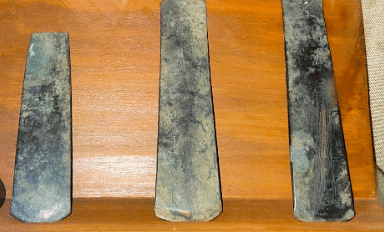 Barli Pillar Inscription
Barli Pillar Inscription
Bhattiprolu Relic Casket Inscription (3rd-1st century BC) - Andhra Pradesh
- The Bhattiprolu script, a variant of Brahmi, was discovered in the flourishing Buddhist town of Bhattiprolu in the present Guntur district.
Sohgaura Copper Plate Inscription (3rd century BC) - Uttar Pradesh
- The earliest known copper plate, known as the Sohgaura copper plate.
- Records famine relief efforts, mentioning the establishment of two grain depots (Kosthagara) to combat famine.
- Discovered in the Gorakhpur district, it is one of the few pre-Ashokan Brahmi inscriptions written in the Prakrit language using the Brahmi script.
Mahasthangarh Brahmi Inscription (around the 3rd century BC) - present-day Bangladesh
- Mahasthangarh was a significant city under the Mauryan Empire.
- The inscription on a limestone slab consists of six lines in the Prakrit language and in Brahmi script, recording a land grant.
Edicts of Ashoka on Rocks and Pillars
The Edicts of Ashoka comprise approximately 33 inscriptions found on pillars, boulders, and cave walls, commissioned by Emperor Ashoka of the Mauryan Empire during his rule from 268 BC to 232 BC. Dispersed across the country, these inscriptions serve as the earliest tangible evidence of Buddhism. Emperor Ashoka, in response to the intricate issues facing society, detailed his views on Dhamma in the edicts. James Prinsep was the first to decipher these edicts.
 Rocks Edicts, AshokaThe Ashokan Edicts are categorized as follows:
Rocks Edicts, AshokaThe Ashokan Edicts are categorized as follows:
- Minor Rock Edicts (3)
- Major Rock Edicts (14 edicts and 2 separate ones found in Odisha)
- Minor Pillar Edicts (5)
- Major Pillar Edicts (6, and in one case 7)
An additional noteworthy mention is the Bilingual Rock Inscription located in present-day Afghanistan, specifically in Kandahar. Dating back to the 10th year of Ashoka's reign (260 BC), this inscription is the first known instance of Ashoka's writing in Greek and Aramaic script, providing further historical significance.
Minor Rock Edicts of Ashoka
The Minor Rock Edicts, forming the earliest part of Ashoka's inscriptions, predate his major Rock Edicts and were written in the early years of his reign, specifically in the 11th year. These inscriptions exhibit slight variations across various known locations, including:
- Bahapur (New Delhi)
- Ahraura (Uttar Pradesh)
- Gujjara (Madhya Pradesh)
- Rupnath (Madhya Pradesh)
- Maski (Karnataka)
- Gavimath (Karnataka)
- Palkigundu (Karnataka)
- Nittur (Karnataka)
- Panguraria (Madhya Pradesh)
- Sasaram (Bihar)
- Bairat (Rajasthan)
- Yerragudi (Andhra Pradesh)
- Rajula Mandagiri (Andhra Pradesh)
- Udegolam (Karnataka)
- Brahmagiri (Karnataka)
- Siddagiri (Karnataka)
- Jatinga Rameshwara (Karnataka)
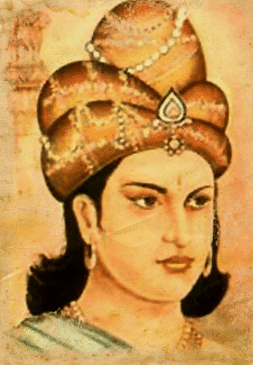 Devanampiya PiyadasiThe third edict is exclusively found in the Calcutta-Bairat edict, known as the Bhabru Edict, where Ashoka expresses full reverence and faith in the Buddha, the Dhamma, and the Sangha.
Devanampiya PiyadasiThe third edict is exclusively found in the Calcutta-Bairat edict, known as the Bhabru Edict, where Ashoka expresses full reverence and faith in the Buddha, the Dhamma, and the Sangha.
In addition to these locations, inscriptions such as the Kandahar Bilingual Rock Inscription (written in Greek and Aramaic script), Aramaic Inscription of Laghman, Aramaic Inscription of Taxila, and Barabar Caves Inscription are sometimes considered part of the Minor Rock Edicts of Ashoka.
Specifically addressing two notable Minor Rock Edicts:
- Gujjara Minor Rock Edict (Madhya Pradesh): Inscribed with Minor Rock Edict 1, using Ashoka's full title 'Devanampiya Piyadasi Asokaraja.'
- Maski Minor Rock Edict (Karnataka): Located on the bank of the Maski River, this inscription remains a dharma shasana, urging people to follow the tenets of Buddhism. It also suggests the spread of Mauryan rule up to the Krishna Valley in North-eastern Karnataka. This edict is historically crucial as it is the first to contain the name Ashoka instead of the earlier reference to Devanampiya Piyadasi, confirming the association of the title 'Devanampiya' with Ashoka.
Major Rock Edicts of Ashoka
There are a total of 14 Major Rock Edicts, constituting a group duplicated with slight variations in 10 known locations and two Separate Major Rock Edicts in Odisha. The 10 locations are as follows:
- Kandahar (Afghanistan)
- Shahbazgarhi (Pakistan)
- Mansehra (Pakistan)
- Kalsi (Uttarakhand)
- Girnar (Gujarat)
- Bombay-Sopara (Maharashtra)
- Erragudi (Andhra Pradesh)
- Sannati (Karnataka)
- Dhauli (Odisha)
- Jaugada (Odisha)
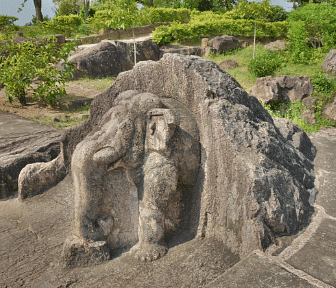 Rock Edicts of Ashoka, Dhauli
Rock Edicts of Ashoka, Dhauli
These edicts primarily focus on instructions related to governing a kingdom, Ashoka’s beliefs, Dhamma, peaceful moral behavior, and tolerance. The Major Pillar Edicts are not inscribed in the name of Ashoka but rather in the name of ‘Devanampiya’ (Beloved of the God), specifically 'Devanampiya Piyadasi.'
Three languages and four scripts were employed in these 14 edicts. The majority of the inscriptions are in the Prakrit language and in the Brahmi script. Prakrit inscriptions were also written in Brahmi and Kharosthi scripts. Notably, those at Mansehra and Shahbazgarhi are in Prakrit language and Kharoshthi script, covering all 14 edicts of Ashoka. Additionally, a few inscriptions are found in Greek and Aramaic script, particularly the Kandahar Greek Edicts, which were inscribed in both Greek and Prakrit languages.
Minor Pillar Edicts of Ashoka
Minor pillar edicts discovered on Ashoka's pillars at Sarnath, Sanchi, Prayagraj (initially located in Kaushambi), Rummindei, and Nigali Sagar.
All written in the Prakrit language and in Brahmi script.
Schism Edicts (warning of punishment for dissent in the Sangha or Order) found at:
- Sanchi (Madhya Pradesh)
- Sarnath (Uttar Pradesh)
- Prayagraj (Uttar Pradesh)
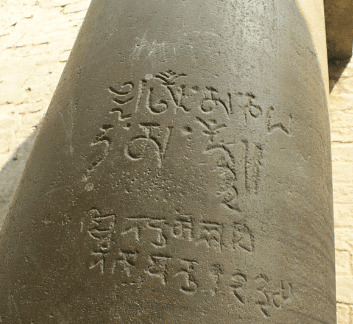 Nigali Sagar Pillar
Nigali Sagar Pillar
On the Allahabad Pillar, a Queen’s Edict where Ashoka credits the Queen (Karuvaki) for her gifts, highlighting charitable deeds.
Remaining two minor pillar edicts found at Rummindei (in Nepal) and Nigali Sagar (in Nepal) are commemorative inscriptions.
Rummindei Pillar Inscription describes Ashoka's visit to Lumbini (birthplace of Buddha) and the exemption of Lumbini from tax.
Nigali Sagar Pillar Inscription mentions that Ashoka increased the height of the stupa of Buddha to double its size.
Major Pillar Edicts of Ashoka
- Kandahar (Afghanistan)
- Delhi-Topra (believed originally from Topra, Haryana)
- Delhi-Meerut (believed originally from Meerut, Uttar Pradesh)
- Allahabad (believed originally from Kaushambi, Uttar Pradesh)
- Lauriya-Araraj (Bihar)
- Lauriya-Nandangarh (Bihar)
- Rampurva (Bihar)
Out of the seven locations, only the Delhi-Topra Pillar has all seven Major Pillay Edicts present.
Prakrit language and Brahmi script were used in all the locations except in Afghanistan.
The last Major Pillar Edict (Edict VI), only found on the Delhi-Topra pillar, is testament in nature, summarizing the accomplishments of Ashoka during his life.
In Rampurva, two Ashokan pillars are found (one with a lion capital and one with a bull capital). The lion capital pillar is inscribed with the Major Pillar Edicts I to VI.
A. Delhi-Topra Pillar:
- Originally placed at a village named Topra (in present-day Haryana).
- Shifted to Delhi by Emperor Firuz Shah Tughlaq, impressed by it.
- Moved to Feroz Shah Kotla (Delhi) and known as Minar-i-Zarrin or the Golden column.
 Delhi-Topra Pillar
Delhi-Topra Pillar - A drawing in Sirat-i-Firuz Shahi shows how the Ashokan pillar was moved from Topra to Delhi by means of a boat.
The Delhi-Meerut Pillar of Ashoka was also moved from Meerut to Delhi in the 14th century.
B. Allahabad Pillar:
- Located in Prayagraj, Uttar Pradesh.
- Originally placed in Kaushambi, Uttar Pradesh.
- Moved to the Allahabad Fort, built by Akbar in 1583.
- An Ashokan Stambh with different sets of inscriptions:
- Ashokan inscription (of 3rd century BC) in Prakrit language and Brahmi script.
 Allahabad Pillar
Allahabad Pillar - Contains Major Pillar Edicts (I to VI) of Ashoka.
- Schism Edict, warning of punishment by Ashoka for dissent in the Sangha or Order.
- Queen’s Edict, highlighting the charitable deeds of Ashoka’s wife Karuvaki.
- Ashokan inscription (of 3rd century BC) in Prakrit language and Brahmi script.
Post-Mauryan Inscriptions
Besnagar Pillar Inscription of Hellodorus (Madhya Pradesh)
- Belongs to the Shunga period (2nd century BC).
- Inscribed on a pillar at Besnagar (ancient Vidisha).
- Written in Prakrit language and in Brahmi script.
- Heliodorus, a Greek ambassador of Antialcidas, inscribed it as a Garuda Pillar honoring God Vasudeva (Vishnu).
- Heliodorus described himself as a Bhagavata, indicating his adoption of Hinduism.
- The pillar also has an inscription on the other side describing steps to immortality.
Hathigumpha Inscription (Odisha)
- Dated around 1st century BC.
- Found in Udayagiri Caves of Odisha.
- Inscribed by King Kharavela, considered the earliest reference to image worship in Jainism.
- Consists of 17 lines in Prakrit language and Brahmi script.
- Provides an account of Kharavela's history, conquests, and patronage of culture and Jainism.
 King Kharavela
King Kharavela
Hathibada Ghosundi Inscription (Rajasthan)
- Dated around 2nd to 1st century BC.
- Also known as the Hathibada Inscription.
- Among the oldest Sanskrit inscriptions in Brahmi script.
- Located near Chittorgarh.
- Related to Vaishnavism (God Vasudeva and Samkarshana) under Hindu tradition.
Naneghat Inscription (Maharashtra)
- Attributed to the Satavahana dynasty (2nd-1st century BC).
- Related to Samkarshana (Balarama) and Vasudeva under Vaishnavism.
- Presents the world’s oldest numeration symbols for ‘2, 4, 6, 7, and 9’ resembling those found in modern scripts.
- Naneghat pass was a major trade route during the Satavahana reign.
Ayodhya Stone Inscription (Uttar Pradesh)
- Dated between 1st century BC and 1st century AD.
- Stone inscription of Hindu king Dhana of the Deva dynasty who ruled from Ayodhya.
- Believed to refer to Pushyamitra Shunga as a performer of two Ashvamedha sacrifices.
 Pushyamitra Shunga
Pushyamitra Shunga
Junagadh Rock Inscription (Gujarat)
- Also known as the Girnar Rock Inscription.
- Located near Girnar hill in Gujarat.
- Includes Ashokan Major Rock Edicts (3rd century BC), Rudradaman’s Rock Inscription (2nd century AD), and Skandagupta’s Rock Inscription (5th century AD).
- Ashokan Edicts written in Prakrit language and Brahmi script.
- Rudradaman’s Inscription records the restoration of Sudarshan Lake.
Kanaganahalli nscription (Karnataka)
- Located near Sannati in Karnataka, an important Buddhist site.
- Contains a Mahastupa and sculptural slabs dating between 1st century BC and 1st century AD.
- A portrait slab of King Ashoka and his queen is present, confirming Ashoka's identity with a Brahmi script label 'Ranyo Ashoka.'
Rabatak Inscription (Afghanistan)
- Written in the Bactrian language and in Greek script.
- Found in present-day Afghanistan, dated around 2nd century AD.
- Provides valuable records of the Kushan ruler Kanishka and genealogy of the Kushan dynasty.
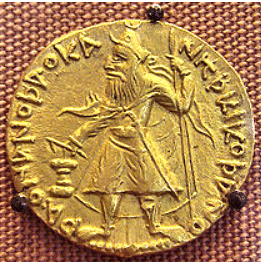 Rabatak Inscription
Rabatak Inscription
Bandhogarh Inscription (Madhya Pradesh)
- Records donations by merchants in the 2nd century AD.
- Unique example of secular gifts as it doesn't identify individuals by varna or jati but by occupation.
Vakataka Inscriptions
The Vakatakas, reigning from 250 AD to 500 AD, emerged as significant successors to the Satavahanas in the Deccan, concurrently existing with the Gupta dynasty in Northern India. This dynasty was predominantly Brahmin. The ensuing inscriptions offer insights into the history and characteristics of the Vakataka dynasty.
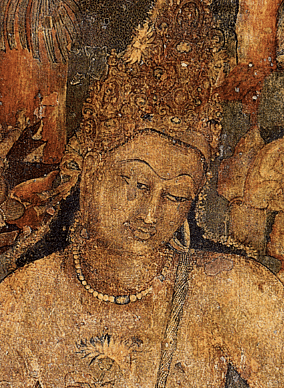 Vakataka Dynasty
Vakataka Dynasty
- Ramtek Kevala Narasimha Temple Inscription (Maharashtra): Records the lineage of the Vakataka rulers and the foundation of the temple.
- Chamak Copper Plates (Maharashtra): Epigraphic record of the Vakataka dynasty in Sanskrit language.
- Tirodi Copper Plates (Madhya Pradesh) : Epigraph record of the Vakataka dynasty in Sanskrit language.
Nagarjunakonda Inscription(Andhra Pradesh)
- Date back to around the 3rd-4th century AD.
- Written in Prakrit, Sanskrit, or a mix of both.
- Employ the Brahmi script.
- Primarily linked to Buddhism and the Shaivism tradition of Hinduism.
- Nagarjunakonda inscriptions document the generous gifts presented by Ikshvakus to Hindu temples and Buddhist monks.
Gupta and Post-Gupta Period Inscriptions
Samudragupta Pillar Inscription (Uttar Pradesh)
- Previously discussed.
Mehrauli Inscription(Delhi)
- Located in Delhi's Qutub Minar complex.
- Notable for its rust-resistant metal composition.
- Established by Chandragupta-II of the Gupta dynasty in honor of Lord Vishnu.
- Credits Chandragupta with conquering the Vanga countries and defeating the Bahlikas.
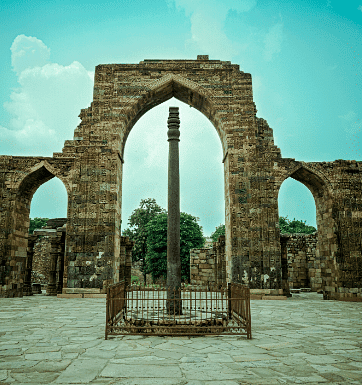 Mehrauli Inscription
Mehrauli Inscription
Sanchi Inscription of Chandragupta II (Madhya Pradesh)
- Sanskrit inscription documenting donations to the Buddhist establishment at Sanchi during Gupta king Chandragupta II's reign.
Gujarat (Saurashtra) Copper Plate Inscription
- Provides information about Harsha's successful expedition against Vallabhi in Gujarat.
Tumen Inscription (Madhya Pradesh)
- 5th-century Sanskrit inscription detailing the construction of a temple during the reign of Gupta king Kumaragupta I.
Bhitari Pillar Inscription of Skandagupta (Uttar Pradesh - 455-467 AD)
- Crucial for defining the chronology of Gupta rulers and conflicts with the Pushyamitras and Hunas.
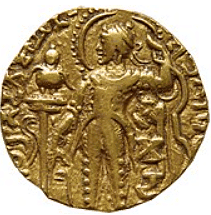 Skandagupta
Skandagupta
Paharpur Copper Plate Inscription (Bangladesh)
- Records events from the time of Buddha Gupta (around 478 AD) in Paharpur, Bangladesh, marking the eastern limit of Buddha Gupta’s empire.
Kahaum Pillar Inscription of Skandagupta (Uttar Pradesh)
- Erected during Skandagupta's reign, depicting carvings of Parshvanatha and other Jain Tirthankaras in Brahmi script.
Shankarpur Copper Plate of Budhagupta (Madhya Pradesh)
- Last known record of later Gupta king Budhagupta.
Thainer Copper Plates (Maharashtra)
- Belong to the reign of Vakataka king Harisena (475-500 AD).
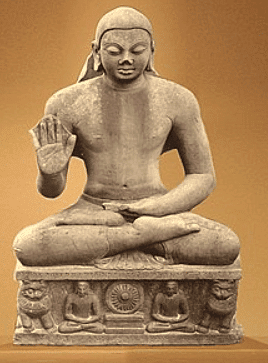 Kumaragupta I
Kumaragupta I
Bilsad Inscription (Uttar Pradesh - around 415 AD):
- Associated with Gupta ruler Kumaragupta I, describing the Kartikeya temple.
Mandsaur Pillar Inscriptions of Yashodharman (Madhya Pradesh - 515-550 AD)
- Sanskrit inscriptions recording Aulikara king Yasodharman's victory over the Hun king Mihirakula.
Eran Boar Inscription of Toramana (Madhya Pradesh - early 6th century AD)
- Documents King Toramana, ruler of the Alchon Huns, providing early evidence of Sati.
Nagarjuni Hill Cave Inscription (Bihar)
- 5th-6th century AD Sanskrit inscription in Gupta script, found in the Nagarjuni hill cave of the Barabar Caves group in Bihar, emphasizing Shiva worship.
Inscriptions of Harshvardhana (7th Century AD)
- Bankkhera, Sonepat, and Madhuban plates useful for understanding Harshavardhana's chronology.
Halmidi Inscription (Karnataka - 450-500 AD)
- Oldest known Kannada language inscription in the Kadamba script, evidence of Kannada as an administrative language.
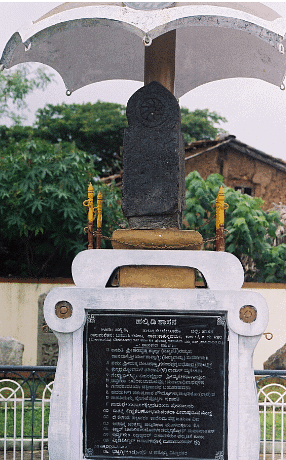 Halmidi Inscription
Halmidi Inscription
Aihole Prashasti (Karnataka)
- Aihole served as the initial capital of the Chalukyas.
- A plethora of inscriptions, notably one close to the Meguti Jain Temple, widely known as the Aihole Inscription or Aihole Prashasti, meticulously detail pivotal Chalukya events.
- The Sanskrit inscription stands out for being penned in Kannada script.
- The inscriptions, credited to Ravikirti, the court poet of Pulakeshin II (who reigned from 610 to 642 AD), narrate the defeat of Harshavardhana by Pulakeshin II, the triumph of the Chalukyas over the Pallavas, and the relocation of the capital from Aihole to Badami.
Notable Tamil - Brahmi Donative Inscriptions
- Pugalur and Arachchalur Inscriptions: Methodically record the benevolent contributions made by Chera rulers, craftsmen, and merchants.
Mangulam Inscriptions: Elegantly capture the acts of generosity towards Jaina monks, featuring noteworthy mentions of a subordinate ruler or functionary of the Pandya king.
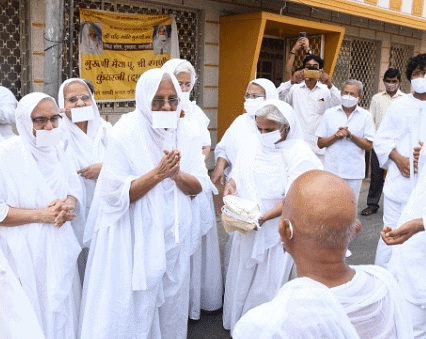 Jaina Monks
Jaina Monks
Doddahundi Nishidhi and Inscription (Karnataka)
- Within the context of Jainism, the inscription at Karnataka's hero stone holds significance, marking the spot where an ascetic, king, or queen willingly embraced death, either through ritual immolation or burial of bone relics.
- The inscription vividly portrays the ritual death (sallekhana and samadhi) of Western Ganga Dynasty's King Ereganga Nitimarga I, dating back to the 9th century AD.
Deopara Prashati(Banagladesh)
- A noteworthy stone inscription (prashasti) authored by Umapati Dhara (1150-1240), who served as a court poet and minister in the era of Lakshmana Sena, offering a detailed historical account of the Sena kings of Bengal.
Khalimpur Copper Plate of Dharmapala (West Bengal)
- Associated with Dharmapala, the second ruler of the Pala dynasty in the Bengal region during the early 9th century AD.
- Provides valuable insights into the military exploits of Dharmapala, potentially in the region of Kannauj.
Harsola Copper Plates (Gujarat - 10th century AD):
- Consisting of two inscriptions from the 10th century AD, these plates meticulously document the grants of two villages to a Nagar Brahmin father-son duo by the Paramara king Siyaka II.
|
110 videos|652 docs|168 tests
|
FAQs on Nitin Singhania Summary: Edicts and Inscriptions - History for UPSC CSE
| 1. What is the significance of inscriptions in ancient India? |  |
| 2. What were the pre-Ashokan inscriptions and why are they significant? |  |
| 3. What are the edicts of Ashoka on rocks and pillars and why are they important? |  |
| 4. What are post-Mauryan inscriptions and what do they reveal? |  |
| 5. How do Gupta and Post-Gupta period inscriptions contribute to our understanding of ancient India? |  |















